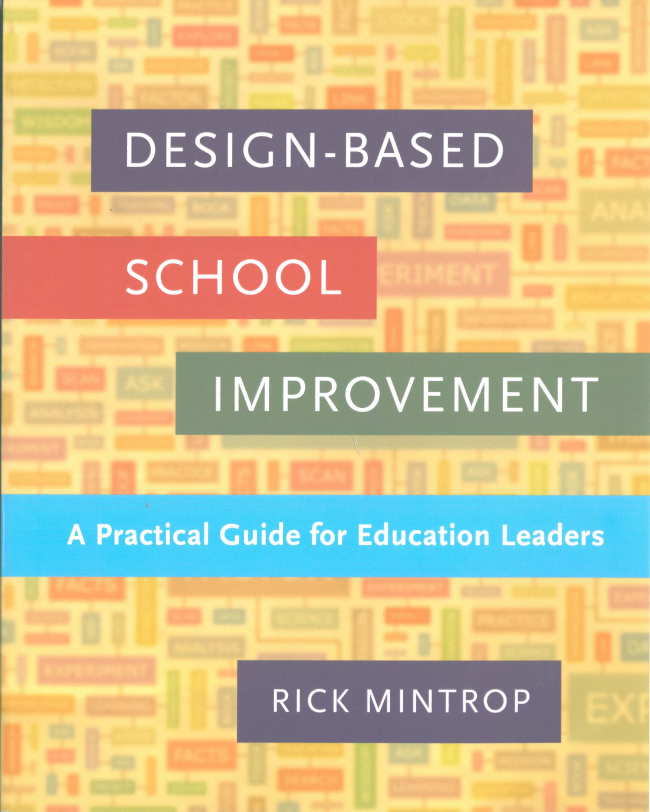Design-Based School Improvement: A Practical Guide for Educators
Rick Mintrop. Harvard Education Press, 2016, 272 pp.
Rick Mintrop. Harvard Education Press, 2016, 272 pp.
 As a principal who is searching for ways to address achievement gaps among several groups of students in my school, I was hooked when I read the author’s assertion, “We know too little about how equity-minded leaders act on their values through practical interventions and make them work within their organizations.” Design-Based School Improvement serves as a practical guide for school leaders who want to create lasting change and improve schools from the inside, rather than relying on outside consultants and prepackaged solutions that may lack “context sensitivity,” which author Rick Mintrop says is at “the base of all successful improvement.”
As a principal who is searching for ways to address achievement gaps among several groups of students in my school, I was hooked when I read the author’s assertion, “We know too little about how equity-minded leaders act on their values through practical interventions and make them work within their organizations.” Design-Based School Improvement serves as a practical guide for school leaders who want to create lasting change and improve schools from the inside, rather than relying on outside consultants and prepackaged solutions that may lack “context sensitivity,” which author Rick Mintrop says is at “the base of all successful improvement.”
The book starts with a definition of design development: “a systematic and disciplined form of innovative problem solving in educational organizations.” Each chapter is focused on one step in the design-based approach and includes the stories of four school leaders as they work through solving a problem of practice in their respective contexts. These problems of practice include behavior management in schools staffed by novice teachers, cultural relevance of instruction, instructional supervision, and shaping a respectful school climate. The chapters include focusing questions that school leaders can reflect on as they tackle change and problems of practice in their own schools and districts. Each chapter also includes a section called “Excursion into Theory,” which introduces the research base that supports that chapter’s specific step of the design process.
While the book presents a structured problem-solving process, some of the chapters—for example the chapter on how to consult the research base to better understand a problem of practice—might not be necessary for all school leaders to read. Having read this resource with my own school’s problem of practice in mind, I found it pushed my thinking in new directions and provided me with specific steps I could take to examine equity and bias in instructional practices in service of closing our achievement gaps. Because of the concrete steps outlined in each chapter, this book is one that principals can use repeatedly to address numerous challenges they are facing in their schools and districts.
Reviewed by Jen Thomas, principal of Hearst Elementary School in Washington, D.C.
Copyright © National Association of Elementary School Principals. No part of the articles in NAESP magazines, newsletters, or website may be reproduced in any medium without the permission of the National Association of Elementary School Principals. For more information, view NAESP’s reprint policy.

